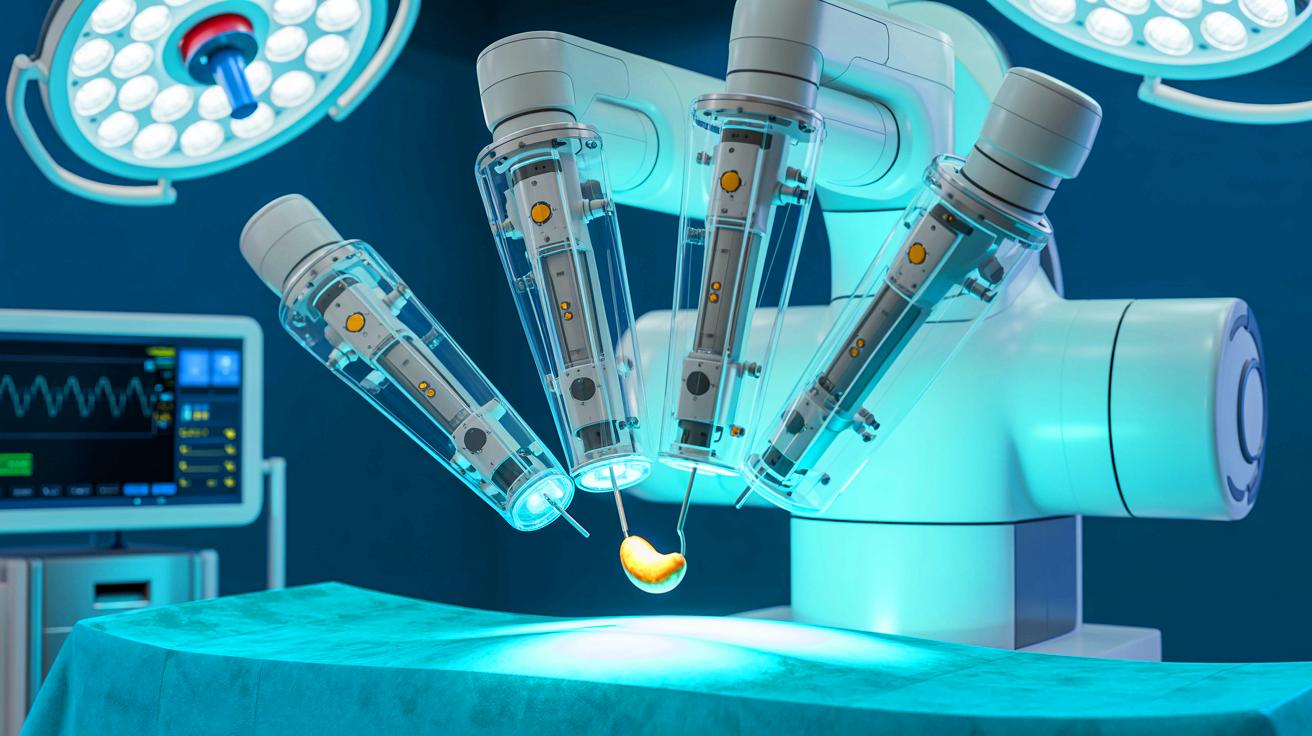IN A NUTSHELL
🔬 Robot autonomously performs gallbladder removal using voice commands, marking a major breakthrough in surgical robotics.
🎥 Trained through imitation learning from surgical videos, the system adapts to unexpected situations with 100% accuracy.
🗣️ Utilizes natural language processing to understand and respond to human voice instructions, similar to AI models like ChatGPT.
🤔 Raises questions about the future roles of human surgeons and the integration of robots in healthcare.
In a groundbreaking development that could reshape the landscape of modern medicine, a robot has successfully performed a gallbladder removal using only voice commands. This achievement showcases the robot’s ability to follow verbal instructions, similar to how an intern might be guided by a seasoned surgeon. The robot was trained using medical procedure videos and executed the task autonomously, marking a significant milestone in the integration of artificial intelligence and robotics in healthcare. This development raises questions about the future roles of surgeons and the potential for robots to transform surgical procedures.
Successful Surgery Without Human Intervention
The robot, trained solely through watching surgical videos, managed to successfully perform eight gallbladder removal surgeries outside of a human body. These procedures were completed without errors, demonstrating the robot’s advanced capability to execute complex medical tasks. It could not only understand natural language commands but also adapt in real-time to unexpected situations, an essential skill for any surgeon. This adaptability is crucial in surgery, where precision and the ability to respond to changing conditions are paramount.
Ji Woong “Brian” Kim, the lead researcher behind this breakthrough, emphasized the significance of this advancement. He noted that it addresses fundamental challenges in deploying autonomous surgical robots in real-world settings. The primary challenge was teaching a machine the countless precise and often contextual gestures required in surgery, such as avoiding blood vessels.
Dr. Mathias Unberath, a professor at Johns Hopkins University, highlighted the difficulty of translating these steps into code. He posed an important question: “How can we convey all this information to the robot?” If a robot can learn simply by observing a human, then the task becomes much more feasible.
From Training to Autonomy
Imitation learning, where the robot observes and replicates human actions, provides a solution to this challenge. Under the guidance of Professor Axel Krieger, a team of American researchers used videos of gallbladder removals performed on pig cadavers to train the robot. This surgery involves 17 steps, including recognizing tissues, determining incision points, and positioning surgical clips.
Unlike previous surgical robots that followed predefined paths, the new system, known as the Surgical Robot Transformer-Hierarchy (SRT-H), can adapt to unforeseen circumstances. This adaptability is akin to a driver navigating unpredictable roads. After learning from videos with explanatory captions, the robot performed the operation with 100% accuracy. Although the process took longer than it would for a human, the results were equally reliable, underscoring the potential of robotic precision in surgery.
The study detailing these findings was published in the journal Science Robotics, marking a milestone in robotic surgery research.
Natural Language for Precision
A defining feature of this robot is its ability to understand human voice commands. Utilizing an AI model similar to those powering tools like ChatGPT, the robot can comprehend instructions such as “move the left arm slightly to the left” and respond instantly. This capability allows it to adjust its actions based on verbal corrections and suggestions, much like a human intern would.
To test its responsiveness, researchers introduced deliberate disruptions to its environment, such as moving the apparatus or altering tissue colors with dyes. Despite these challenges, the robot maintained its effectiveness without losing orientation. This advancement demonstrates that complex surgical procedures can now be automated with a high degree of robustness.
Krieger stated, “These results show that surgical autonomy, once perceived as science fiction, is now an achievable reality.” This breakthrough signals a significant shift in how medical procedures could be conducted in the future, with robots playing a pivotal role.
The Future of Surgical Robotics
This technological leap prompts a reevaluation of the future of surgery and the role of human surgeons. While the robot’s success in performing gallbladder removal is a significant achievement, it raises questions about the broader implications of robotic autonomy in medicine. Will this technology augment human surgeons, or could it eventually replace them in certain procedures?
The integration of natural language processing and machine learning in surgical robotics opens new possibilities for improving surgical precision and outcomes. As these technologies continue to evolve, the potential for reducing human error and increasing surgical efficiency becomes increasingly apparent. However, ethical and practical considerations must also be addressed as we navigate this new frontier.
As this field progresses, ongoing research and dialogue will be crucial in determining how best to integrate robotic systems into healthcare. What will the future hold for the relationship between human surgeons and their robotic counterparts?
This article is based on verified sources and supported by editorial technologies.
Did you like it? 4.6/5 (23)

